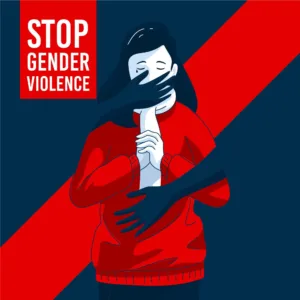Eradicating Injustice: The Crusade Against Hentai Rape/Anti rape in India

hentai rape
Introduction of Hentai Rape/Anti Rape
In addition to being a crime against a person, rape is a social evil that reflects pervasive problems with gender inequality and structural injustice. Even though it is one of the most horrible crimes, India is not an exception; it is still commonplace worldwide. Hentai Rape/Anti-rape laws have evolved as a result of the urgency with which this crime must be addressed; their goals are to protect survivors from harm and discourage potential offenders.
The legal structure in India has experienced notable modifications in response to the public uproar over the 2012 Delhi gang rape case. The Hentai rape/Anti-Rape Law, also known as the Criminal Law (Amendment) Act 2013, marked a turning point in Indian legal history by expanding the definition of rape and enacting harsh penalties. But even with these changes, there are still issues with these laws’ efficacy and application.
Survivors are typically deterred from coming forward by the protracted legal process, social stigma, and poor conviction rates. The National Crime Records Bureau (NCRB) reports that India’s rape conviction rate is startlingly low, raising concerns about how well the legal system handles these kinds of crimes.
This essay seeks to analyze the Hentai rape/anti-rape laws that are currently in place in India, evaluate their efficacy, and investigate the legal and sociological barriers that impede justice. Using this analysis, we want to comprehend the intricacies of the legal reaction to sexual assault and put up suggestions for establishing a stronger and victim-focused legal structure.
Historical Background of Hentai Rape/Anti-rape Laws in India
India’s legal fight against rape has a long and changing past; major changes and public outcry have impacted the laws that exist today. The Indian Penal Code (IPC) of 1860, which first defined rape as non-consensual sexual relations with some restrictions and exclusions, is where anti-rape laws first appeared.
An important turning point was the Mathura Rape Case of 1972, which exposed the shortcomings of the legal system in defending victims. Nationwide protests and calls for legal reform resulted from the acquittal of police officers who were accused of raping a little girl while she was in custody.
The Criminal Law (Second Amendment) Act of 1983 was introduced in response, acknowledging rape that occurs while a person is in custody and introducing major modifications to the evidentiary procedures pertaining to the burden of proof in rape cases.
Notwithstanding these modifications, the IPC’s stance on rape remained narrow, failing to acknowledge rape that occurs in marriage and failing to provide for the needs of male victims. Legal interpretation and controversy around the definition of rape and the notion of consent.
The Criminal Law Amendment Act of 2013 was the result of the horrific 2012 Delhi gang rape case, which thrust the subject of rape into the international spotlight. This law strengthened the definition of rape and imposed more severe punishments, such as the death penalty in some circumstances.
Nevertheless, difficulties still exist in spite of these measures. The legal framework’s exclusion of marital rape and the poor conviction rates for rape cases are persistent points of contention that call for additional legislative development1.
This historical synopsis emphasizes the ongoing fight for a more fair and efficient legal system that can effectively prosecute and discourage the crime of rape.

Current Legal Framework of Hentai rape/Anti-Rape Laws in India Section 375 IPC: Definition of Rape
- Against her will
- Without her consent
- Consent obtained under fear of death or hurt
- Consent when the man is not her husband
- Consent given under unsoundness of mind or intoxication
- With or without consent, when she is under sixteen years of age
Section 376 IPC: Punishment for Rape
- Specifies the punishment for the offense of rape, which can range from rigorous imprisonment to the death penalty for certain aggravated forms of rape.
Amendments and Ordinances
The Criminal Law (Amendment) Act of 2013 broadened the definition of rape and imposed tougher punishments.
The Protection of Children from Sexual Offenses (POCSO) Act and the Indian Penal Code were further revised by the Criminal Law (Amendment) Ordinance, 2018, which made sure that minors who are raped will receive the harsher penalty between the two.
Sexual Assault in Marriage/Marital Rape
Marital rape is not recognized by the IPC at this time, despite constant discussion and calls for legislative change.
Gender Neutrality
The IPC has come under fire for not being gender-neutral because it only acknowledges women as victims under certain sections.
This framework serves as the cornerstone of India’s legal campaign against rape or Anti rape or Hentai rape. It has faced criticism and calls for revision, especially in relation to the necessity for gender neutrality in the law and the acknowledgment of marital rape. The sources listed in the citations can be consulted for a more thorough examination.
Analysis of Hentai Rape/Anti-Rape Laws in India
Lawful Obligations
Section 375 of the Indian Penal Code (IPC) defines rape, while Section 3761 lays out the associated penalties.
The Criminal Law (Amendment) Act of 2013 imposed more severe punishments and broadened the definition of rape.
Social Attitudes
Victim blaming and societal shame frequently deter survivors from reporting incidents.
To alter how society views rape and consent, more awareness and education are required.
Implementation Difficulties
In India, conviction rates for rape are still low despite strict laws.
Two major obstacles are insufficient support for survivors and lengthy court proceedings.
Legal Interpretation
Courts have been essential in interpreting and enforcing anti-rape legislation, frequently completing legislative gaps.
More victim-centric strategies are demanded for legal proceedings.
Reform Is Necessary
Opponents contend that marital rape ought to be covered by the law.
Laws are being pushed to become more gender-neutral to acknowledge that men can also become victims of rape.
This analysis shows that although rape is illegal in India, there are systemic and societal problems that make it difficult for the laws to be effective. Read scholarly articles, court decisions, and empirical studies that go into great depth about these laws for a more thorough understanding. Please let me know if you need any specific details or further information.
Challenges and Criticisms of Hentai rape/Anti-Rape Laws in India
The cultural, legal, and procedural dimensions of anti-rape laws in India present a variety of difficulties and critiques. Based on current discussions and research, the following is an overview:
Social Guilt
Rape survivors frequently experience victim-blaming and social exclusion, which may discourage them from coming forward with the crime.
Legal Shortcomings
Some legal criteria, including “outraging the modesty of a woman,” are criticized for being archaic and patriarchal.
One major topic of dispute is that marital rape is not considered a crime.
Concerns Regarding Enforcement
The law and its enforcement are not always in agreement; on occasion, police will not file complaints or will violate the rights of survivors when conducting investigations.
Rape victims still struggle with a great deal of fear and shame, which makes them less likely to disclose the crime.
The Court System
For survivors, the legal process can be protracted and traumatic, involving intrusive examinations and coercion to alter statements.
Justice for survivors is usually lacking as a result of low conviction rates and improper case handling.
Systemic Reform Is Necessary
The lack of effective enforcement and investigation in spite of tougher laws suggests that structural and procedural reform is still necessary to significantly reduce rape.
Although the Verma Commission proposed making marital rape a crime, neither Parliament nor the courts have yet to implement this recommendation.
These difficulties underscore the necessity for a comprehensive strategy in the revision and application of anti-rape legislation. Not only should strict laws be made, but it’s also important to make sure that they are properly implemented and that society as a whole changes its perspective to support survivors. You can consult the sources listed in the citations for a more thorough explanation.
Conclusion: Toward a Future Free from Fear
As this article has examined, there have been notable changes made to India’s anti-rape law system, especially in the aftermath of high-profile instances that have drawn national attention. The legislature intended to address and discourage the horrible crime of rape, as seen by the changes made to the Indian Penal Code and the adoption of new ordinances.
The examination of these regulations and how they are applied, however, shows a clear disconnect between the text of the legislation and survivors’ actual experiences. Numerous issues, such as social stigma and administrative roadblocks, lead to a system that frequently fails the people it is supposed to safeguard.
Gender-neutral laws and the denial of recognition for marital rape, among other criticisms of the current legal system, underscore the pressing need for ongoing reform. To guarantee justice and safety for everyone, it is crucial that the legal system changes proactively as well as in reaction to public uproar.
In summary, even though the actions made thus far are praiseworthy, they are only the start of a long road that will eventually lead to a society in which the dread of rape is extinct. Lawmakers, the police, the courts, and society at large must work together to complete this journey. Then and only then can we hope to establish a setting where each person’s rights and dignity are maintained, and the ghost of sexual assault is cast out of the dark and into the annals of history.




Thanks for sharing. I read many of your blog posts, cool, your blog is very good.